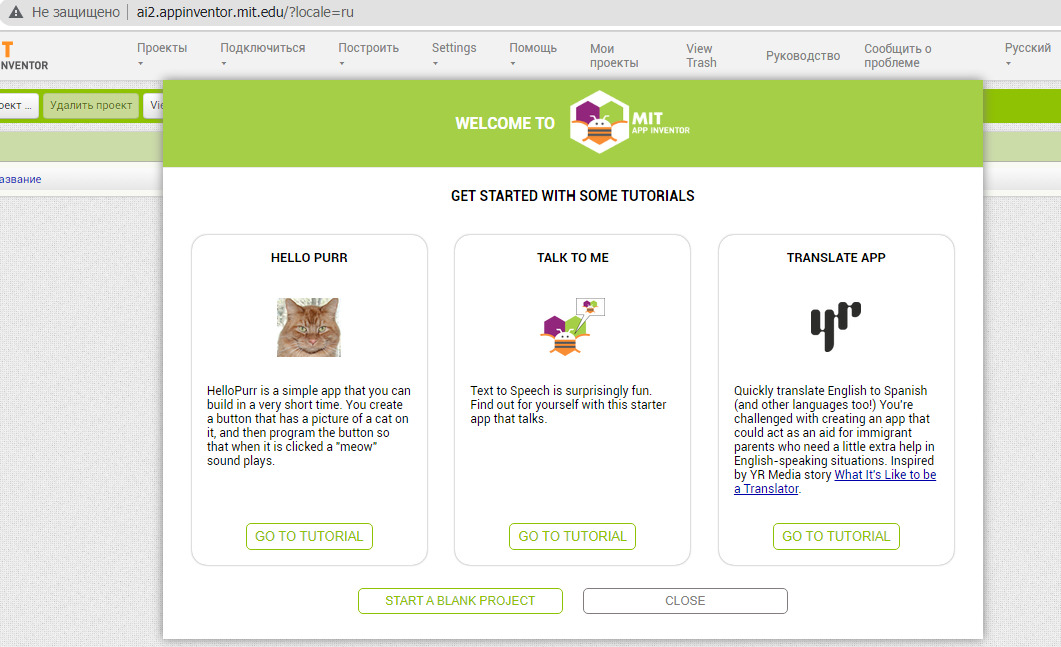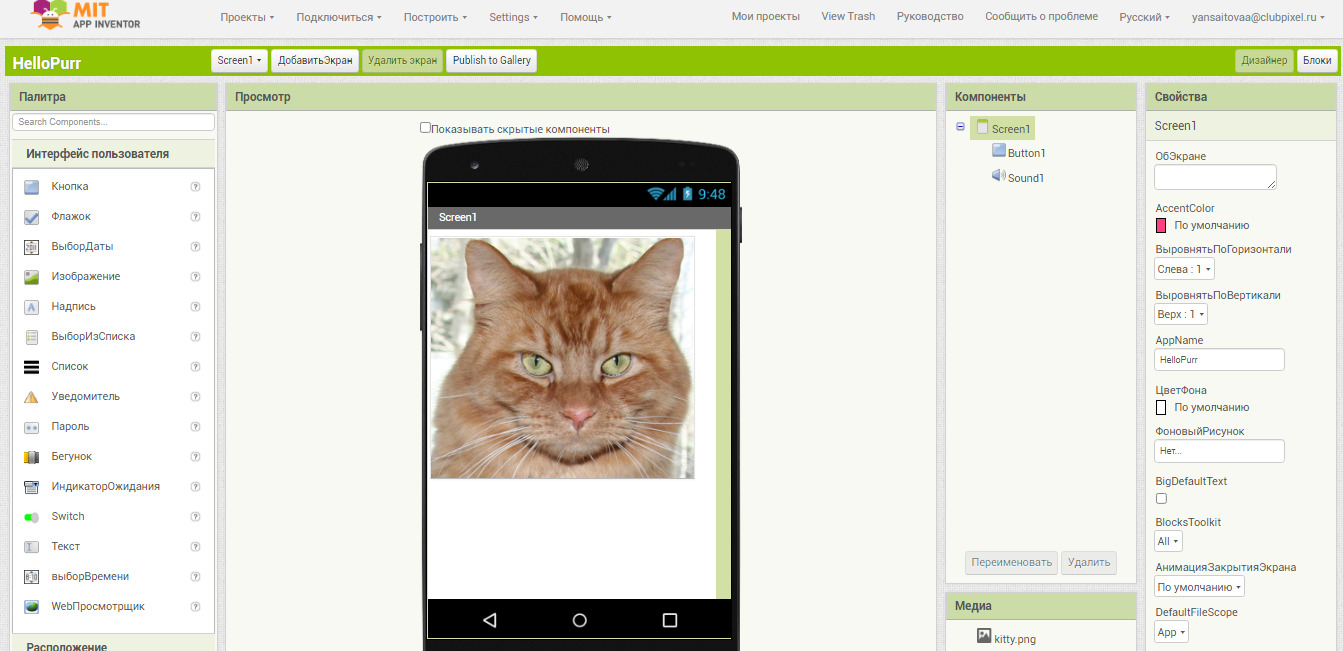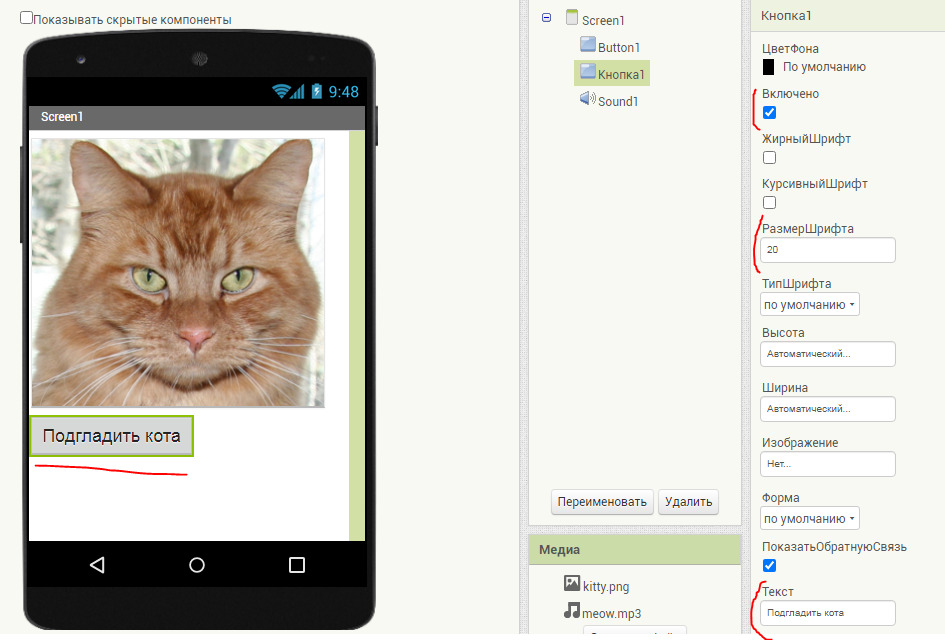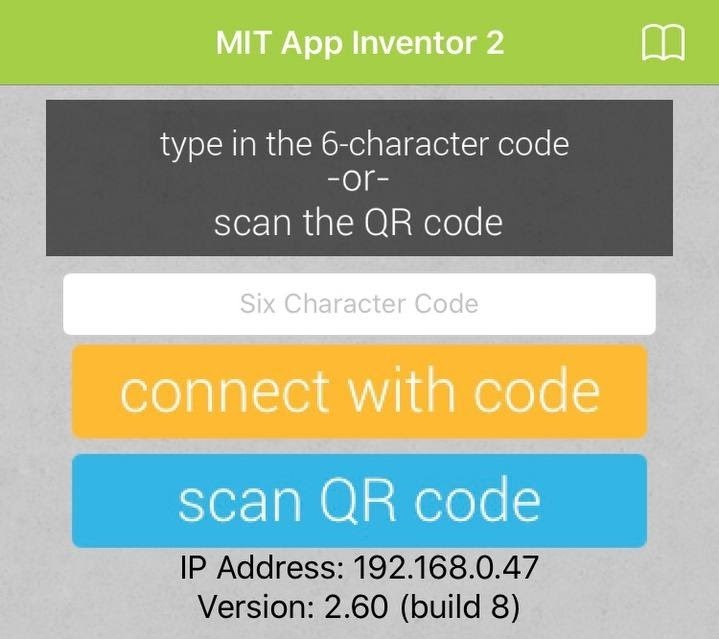- Artificial Intelligence with MIT App Inventor
- Fake Voices: The Ethics of Deepfakes
- Introduction to Machine Learning: Image Classification
- Personal Image Classifier: PICaboo
- Voice Calculator Tutorial
- Therapist Bot Tutorial
- Awesome Dancing with AI Tutorial
- Facemesh Filter Camera
- ChatGPT App
- Rock Paper Scissors Tutorial
- Alexa Hello World
- Alexa Calculator
- Alexa Number Guessing Game
- Alexa Messenger
- Создаём игру на Android с помощью MIT App Inventor
- Beginner Tutorials
Artificial Intelligence with MIT App Inventor
Artificial Intelligence (AI) has been part of computing since the 1950s. But it’s only been since 2000 that AI systems have been able to accomplish useful tasks like classifying images or understanding spoken language. And only very recently has Machine Learning advanced to a point such that significant AI computations can be performed on the smartphones and tablets available to students.
MIT is building tools into App Inventor that will enable even beginning students to create original AI applications that would have been advanced research a decade ago. This creates new opportunities for students to explore the possibilities of AI and empowers students as creators of the digital future.
AI with MIT App Inventor includes tutorial lessons as well as suggestions for student explorations and project work. Each unit also includes supplementary teaching materials: lesson plans, slides, unit outlines, assessments and alignment to the Computer Science Teachers of America (CSTA) K12 Computing Standards.
As with all MIT App Inventor efforts, the emphasis is on active constructionist learning where students create projects and programs that instantiate their ideas.
Fake Voices: The Ethics of Deepfakes
Difficulty: beginner
Resource Type: curriculum unit
Subject: computer science
In this unit, students explore synthetic media by creating a smartphone app that can speak in different voices by changing the rate and pitch of the speech. Students work in groups to present arguments about the possible future impacts of various types of deepfake media, including ones in commerce and. More Details
Introduction to Machine Learning: Image Classification
Difficulty: beginner
Resource Type: curriculum unit
Subject: computer science
Students will learn about the basics of machine learning and create their own apps that implement these concepts through image classification. The students will take photos with their mobile devices and the apps will identify objects within those photos. Each classification comes with a confidence level, a value of how. More Details
Personal Image Classifier: PICaboo
Difficulty: intermediate
Resource Type: tutorial
Subject: computer science
How can a machine learn about the world? In some ways computers are like very young babies, always soaking up new examples and trying to put what they sense into different buckets — dog, cat, familiar face, stranger. In this two-part tutorial, you will learn about a type of artificial. More Details
Voice Calculator Tutorial
Difficulty: intermediate
Resource Type: tutorial
Subject: computer science
Have you ever wondered how conversational AI agents such as Alexa and Siri work? How do they interpret what you are saying to them and grasp your intent? How do they then know how to appropriately and meaningfully respond to you? In this project you are challenged to create your. More Details
Therapist Bot Tutorial
Difficulty: intermediate
Resource Type: tutorial
Subject: computer science
Can an app on your phone be your next therapist? Our friends at YR Media reported on apps that use artificial intelligence to power therapy bots in their news story Could Your Next Therapist Be Your Phone? This tutorial will show you how to make your own therapist bot app. More Details
Awesome Dancing with AI Tutorial
Difficulty: intermediate
Resource Type: tutorial
Subject: computer science
Our amazing friends at YR Media has published an intriguing interactive story on AI titled Can You Teach AI to Dance? which got us thinking. Is there an algorithm to describe, identify or measure an amazing dance? Can dance moves be quantified and measured? Can AI be used to help. More Details
Facemesh Filter Camera
Difficulty: intermediate
Resource Type: tutorial
Subject: computer science
Have you taken photos with facial filters? Instagram and Snapchat facial filters have taken the internet by storm, but do you know how these filters work? Would you like to make your own facial filters? Our friends at YR Media have this excellent interactive article about facial recognition. In this. More Details
ChatGPT App
Difficulty: intermediate
Resource Type: tutorial
Subject: computer science
Have you ever wondered how it is possible to create your very own ChatGPT app that will allow you, wherever you are, to tap into a world of useful information? In this tutorial, you will build a simple app with MIT App Inventor that allows users to connect to ChatGPT. More Details
Rock Paper Scissors Tutorial
Difficulty: advanced
Resource Type: tutorial
Subject: computer science
These days Artificial Intelligence and Machine Learning are all the craze, but have you ever wondered how in the world is it really possible to teach a machine to learn something, anything really, and become, well, artificially intelligent? In this project, using the context of one of the simplest children’s. More Details
Alexa Hello World
Difficulty: beginner
Resource Type: tutorial
Subject: computer science
In this tutorial, you will learn how to use the MIT App Inventor’s Conversational AI Interface to create your own Amazon Alexa skill for Alexa to say “Hello World” when prompted by the user. More Details
Alexa Calculator
Difficulty: beginner
Resource Type: tutorial
Subject: computer science
In this tutorial, you will learn how to use the MIT App Inventor’s Conversational AI Interface to create your own multiplication calculator for Alexa to tell the user the answer when a basic multiplication question is asked. The Skill we will be making uses slots to keep track of what. More Details
Alexa Number Guessing Game
Difficulty: intermediate
Resource Type: tutorial
Subject: computer science
In this tutorial, you will be using the App Inventor Alexa Skills interface to create an interactive number guessing game, where the player tries to guess a random number selected by Alexa. After each guess, Alexa will give you feedback on whether your guess is too big, too small, or. More Details
Alexa Messenger
Difficulty: advanced
Resource Type: tutorial
Subject: computer science
Up to this point you have only seen App Inventor Alexa tutorials where App Inventor was only used to provide an easy block-based language environment to develop Alexa Skills. These may have given the wrong impression that Alexa does not really integrate with many of the native mobile app developing. More Details
Создаём игру на Android с помощью MIT App Inventor
Для создания и публикации игр на Android сейчас есть множество доступных инструментов. Одним из них является конструктор MIT App Inventor, интерфейс которого во многом очень схож с визуальной средой Scratch. Благодаря этому с помощью MIT App Inventor даже дети могут самостоятельно создавать игры и приложения для Android.
Пример рабочего окна в MIT App Inventor
Код в MIT App Inventor во многом схож с языком программирования в среде Scratch
MIT App Inventor – бесплатный облачный инструмент, изначально разработанный Google, сейчас поддерживается Массачусетским технологическим институтом (MIT). Платформа с открытым исходным кодом позволяет сразу приступить к визуальному дизайну игры или приложения.
После создания проекта его сразу можно установить на мобильное устройство и запустить с помощью QR-кода, который можно отсканировать с помощью телефона.
Пример QR-кода в MIT App Inventor
Для начала на сайте http://www.appinventor.mit.edu/ необходимо создать аккаунт.
При регистрации необходимо указывать данные аккаунта на Google.com
После регистрации вы можете выбрать русский язык в настройках
При создании проекта вам будет предложено выбрать пример приложения и инструкцию по его созданию, также можно выбрать кнопку «Проект с нуля».

Например, выберем приложение HELLO PURR — простое приложение, где нужно коснуться котика, чтобы услышать его мяуканье. После выбора приложения откроется рабочее окно с редактором. 
Выберите и установите кнопку под фото с изображением кота. Переименовать кнопку можно, вбив название в поле «Текст». 
Отредактировать надпись можно на панели текст, изменив размер надписи и жирность текста. 
Далее переходим в раздел «Блоки» в верхнем меню.
Здесь необходимо обозначить алгоритм появления звука «Мяу» после нажатия на надпись «Погладить кота». Далее разделе «Управление» выбираем следующий алгоритм.

акже добавляем действие, чтобы при нажатии кнопки телефон дополнительно вибрировал. 
Далее добавим таймер в алгоритм. 
В итоге должен получиться такой код. 
Теперь сохраняем проект в разделе «Проекты» — «Сохранить проект как…». Также в верхнем меню выберите пункт «Построить Android App». 
После этого начнется упаковка приложения для мобильного устройства, это займет какое-то время. 
Далее вы сможете скачать приложение на телефон или запустить его на ПК. 
Cкачать MIT App Inventor на телефон можно здесь. 
На ПК скачать можно здесь.
На телефоне MIT App Inventor выглядит так.

После сканирования приложения вы можете протестировать свое приложение: при нажатии на кнопку появляется звук «Мяу» и вибрация. 
Подробная инструкция по созданию приложения находится по ссылке https://appinventor.mit.edu/explore/ai2/hellopurr. Также дополнительно можно запускать другие приложения в MIT App Inventor, подробные инструкции можно скачать по ссылке. Или посмотреть мануалы на Youtube. 
В MIT App Inventor используется упрощенный код, позволяющий пользователям быстро создавать и разворачивать приложения для мобильных устройств, одновременно изучая основы кода и разработки приложений. Другим преимуществом MIT App Inventor является его доступность: с помощью этой платформы можно бесплатно и быстро реализовывать популярные игры. 
Гибкая и простая в изучении платформа App Inventor будет полезна начинающим программистам для запуска первых приложений для Android. Особенно платформа будет полезна тем, кто уже умеет программировать на языке Scratch. Подборку видео по созданию игр на Scratch смотрите на Youtube.
Beginner Tutorials
App Inventor is a free, cloud-based service that allows you to make your own mobile apps using a blocks-based programming language. You access App Inventor using a web browser (Chrome, Firefox, Safari). With these beginner-friendly tutorials, you will learn the basics of programming apps for Android and iOS phones and tablets.
You will need:
You will make a mobile app, so it’s fun to see it run on a phone or tablet while you build the app (and after!). Some setup is required to run your apps.
Choose which way you want to connect to run your apps, and follow the links to setup instructions:
Teachers: Get support and tips for preparing for using App Inventor with your students.
Making Mobile Apps with App Inventor
We have four beginner tutorials to try out. We recommend starting with Hello Codi!, but any of the four tutorials are accessible for novice coders. They can all be completed within an hour.
For each tutorial, we have multiple ways of accessing them:
- Click the tutorial link to open up a project directly in the App Inventor environment with the tutorial in the sidebar. This is our recommended way to complete the tutorials. Note that each of these can also be used for Hour of Code events.
- If you prefer, you can click on the video links to follow the tutorial in a video. Please note, this requires you have two windows open in the browser — one to play the video and one to run App Inventor.
- We also have links to pdf files for each tutorial for those who prefer text instructions.
After building the starter apps, which will take around an hour, you can move on to extending them with more functionality, or you can start building apps of your own design.







